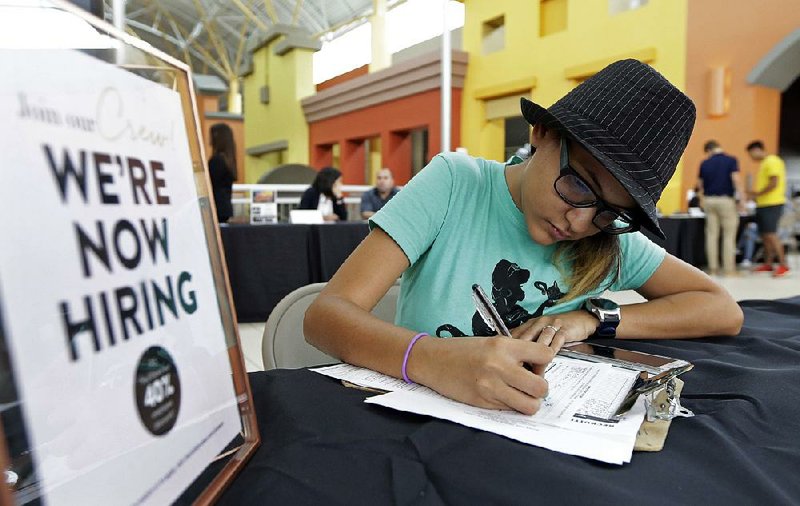WASHINGTON -- U.S. workers' wages and benefits grew 2.6 percent last year, the fastest 12-month pace since the spring of 2015.
The 12-month gain in wages and benefits came despite a slight slowdown at the end of last year with wages and benefits rising 0.6 percent in the fourth quarter, a tiny dip from a 0.7 percent gain in the third quarter, the Labor Department reported Wednesday. Still, the 12-month gain was an improvement from a 2.2 percent gain for the 12 months ended in December 2016.
Also Wednesday, the ADP Research Institute reported that companies added more workers in January than projected, indicating the labor market remains healthy. Private payrolls increased by 234,000 after a revised 242,000 increase in December.
In his State of the Union address Tuesday night, President Donald Trump touted the rise in wages as an accomplishment of his economic program. But private economists contend that wages should be rising at a faster pace given that unemployment is now at a 17-year low of 4.1 percent.
The gain in the employment cost index showed that wages and salaries were up 2.5 percent for the 12 months ended in December while benefits such as employer contributions to health insurance and pension plans rose 2.5 percent. Wages and salaries make up about 70 percent of compensation costs while benefits make up the other 30 percent.
Most economists believe that wages should be increasing at a faster pace given the drop in the jobless rate to 4.1 percent. The last time unemployment was this low, in the late 1990s, average hourly pay, another measure of wages, was rising at a 4 percent pace. Hourly wages rose 2.5 percent in 2017, down from a 2016 gain of 2.9 percent, according to a separate Labor Department report.
The employment cost index -- which tracks wages and compensation benefits -- last rose faster than 2.6 percent over a 12-month period in September 2008 when the gain was 2.9 percent.
The ADP hiring data showed that payrolls in goods-producing industries, which include builders and manufacturers, rose 22,000; factory employment increased 12,000 and service providers added 212,000 workers to payrolls, the most since Nov. 2016.
"The job market juggernaut marches on," said Mark Zandi, chief economist of Moody's Analytics Inc. in West Chester, Pa. Moody's produces the figures with ADP. "Given the strong January job gain, 2018 is on track to be the eighth consecutive year in which the economy creates over 2 million jobs. If it falls short, it is likely because businesses can't find workers to fill all the open job positions."
The data show a continuing trend of robust hiring as companies remain desperate for skilled and experienced workers. While steady job gains have yet to filter through into bigger wage growth, companies including Apple Inc., FedEx Corp., and Walmart Stores Inc. offered bonuses in the wake of a Republican tax bill signed by Trump late last year.
The January ADP figure compares with the Bloomberg survey median for a 181,000 increase in private payrolls, when the government issues its monthly jobs report Friday.
Payrolls in trade, such as retailers, transportation and utilities, increased 51,000 in January, while health care companies took on 41,000 workers.
Large companies, those employing 500 or more workers, increased staffing by 85,000 jobs; payrolls rose by 91,000 at medium-size businesses, or those with 50 to 499 employees; and small companies added 58,000 jobs.
Information for this article was contributed by The Associated Press and Bloomberg News.
Business on 02/01/2018

